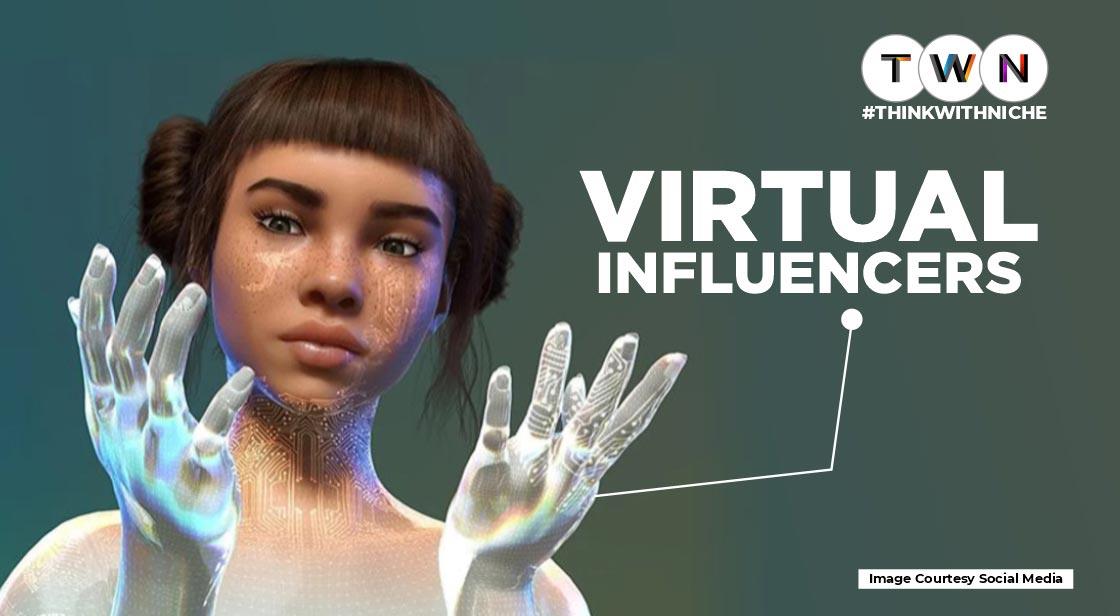
CGI influencers, sometimes known as virtual influencers, are computer-generated 'people' with real-life characteristics, features, and personalities. They are made by astute individuals or brands with a keen interest in technology. Their identities are concealed. These producers are in charge of growing their Instagram accounts and shaping these virtual beings into the influential personalities and influencers that they have become.
Lil Miquela, a 19-year-old Brazilian-American beauty, with 3 million Instagram followers, 3.6 million TikTok followers, and 30 thousand Twitter followers. Her work with high-profile companies such as Calvin Klein, Dior, and Prada was featured on many magazine covers. Miquela also released "not Mine" in 2017, and her debut music video, "hard feelings," was premiered at Lollapazoola's internet festival. Given the prevalence of influencer marketing, this is not surprising.
This may come as a surprise, but Miquela isn't genuine. She was designed by Brud, a Los Angeles-based business.
Lil Miquela is one of the many new virtual influencers of the social media marketing era. A computer creation that behaves like a person can do the same tasks as actual influencers like models and athletes.
Virtual Influencers Are On The Rise
Before 2018, computer-generated characters like Lil Miquela were uncommon. Since the advent of the "virtual person" industry, they have been prominently featured in several marketing efforts. The World Health Organization was established in 2020. (WHO). joined forces Knox Frost, an Atlanta-based virtual influencer, is here to raise awareness and funding for the coronavirus. Buzzfeed describes the COVID-19 Solidarity Response Fund.
Since 2009, Lu do Magalu, a Brazilian virtual spokeswoman, has used her rapidly expanding social media channels to promote Magalu evaluations, product recommendations, and updates. After ten years, Magalu achieved a $552 million profit.
PUMA and Maya struck a cooperation in Singapore in early 2020. She was dubbed the "official PUMA gal," and she appeared in the commercial alongside Singaporean actor Tosh Zhu. A local virtual influencer, Ava Lee-Graham, also joined BHG to take over the company's Instagram account in order to promote their in-house labels.
Imma is the first virtual fashion model and influencer in Japan. She has worked with various high-end brands, including Valentino, Salatore Ferragamo SpA, and Nike. Imma, with her signature bubble-gum pink bob and superb fashion, was named one of Japan Economics Entertainment's "New 100 Talents To Watch." She was also on the cover of Grazia magazine.
Lucy will be the first virtual influencer for South Korean retailer Lotte Home Shopping in September 2020. She made her television debut as a host for a Christmas special broadcast in late 2021. The virtual model has since earned 100K Instagram followers and 13K TikTok followers.
Liu Yiexi, China's equivalent of TikTok, attracted over 3,000,000 fans in five days. Her two-minute video clip quickly went viral. She has so far published six videos and is still trending in Douyin, where she has over 830 million followers.
China's virtual sector was valued at $487 million in 2020, according to iiMedia Research statistics. This implies a 70% increase year on year, with a peak of $875.9 predicted in 2021. International investors are also interested. According to Imma's inventor, Aww Inc. secured $1 million in a seed round from Coral Capital in September 2020. Superplastic Inc., the Vermont-based firm behind Janky and Guggimon, has raised $16 million in preliminary funding until the end of 2020. Craft Ventures, SV Angels, and Scooter Braun, who manages Ariana Grande, Justin Bieber, and other celebrities, all invested. According to Crunchbase, the company has raised a total of $47 million in investment.
Brands Get The Benefits
There are numerous motivations for brands to support computer-generated influencers. These are some examples:
Unlimited creative possibilities: Brands can tailor virtual influencers to their own needs and personalities.
Brand control: Brand managers no longer need to give up and rely on content creators to include brands into their tales and styles. They now wield more influence than virtual influencers. Virtual influencers are free of scandal and can consistently generate social media material that represents brand values and identity.
Long-term cost savings are possible because virtual influencers can be reused permanently. They never "worn out" and are always stunning. They are also available 24 hours a day, seven days a week, and may go to any region of the world, including outer space, to assist brands with their brand concepts. Their content production expenditures will not climb in direct proportion to their rising fan base.
According to Statista, 75% of Americans aged 18-25 follow no more than one virtual influencer. Brands that support virtual superstars have the ability to interact with younger consumers that are more digitally smart and tech-savvy. Virtual influencers are adaptable to any digital context. Virtual influencers, a young generation that swiftly adopts the metaverse, can help brands create a smooth transition into this new digital realm. This will boost brand trust and build emotional attachment.
Virtual influencers, like any actual influencer, can attract millions of followers and provide marketers with several options to reach young audiences. According to a survey, the true impact of computer-generated influencers will be exposed only when actual connections become more prominent. Virtual characters, on the other hand, can supplement existing brand marketing efforts and allow a seamless transition to the metaverse. As a result, when brands are ready for the metaverse, virtual influencer endorsement will proliferate in the next decades.
Tags:
cgi influencers, virtual influencers, computer generated people
Read This Full ARTICLE, Click Here


Comments
Post a Comment